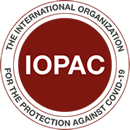WHO provides practical steps to help countries adapt global guidance on antenatal care
Governments can help to save lives and improve every woman’s and adolescent girl’s experience of pregnancy by updating their national guidelines with the WHO recommendations on antenatal care. For WHO recommendations to be effective however, they must be adapted to local context and monitored in
a consistent way.
That is why WHO has now released the Antenatal care recommendations adaptation toolkit, in collaboration with Ministries of Health, WHO Regional and Country offices,
implementation experts and country stakeholders.
The toolkit sets out practical steps for governments wishing to introduce WHO recommendations at national and subnational level.
In addition, an antenatal care monitoring framework, has been developed to help countries and health facilities track their progress and impact.
A standard process for adapting WHO guidance
The WHO antenatal care guidelines for a positive pregnancy experience include 23 recommendations which are context-specific: they need tailoring to local situations, for example, populations with different nutritional needs or rates
of infections.
Currently there is no standardized method for implementing global recommendations at the national level.
The new antenatal care toolkit guides policy makers in how to interpret and apply context-specific recommendations; steps which can be time-consuming but which are essential for providing care to meet each person’s
needs and preferences.
“Countries were not only asking for technical guidance on antenatal care, they also wanted an evidence-based approach on how to adapt that guidance for their own contexts,” explained Dr Nancy Kidula, a Medical
Officer in the WHO Regional Office for Africa.
Understanding local context to improve maternal health
The Ugandan Ministry of Health has successfully used the new toolkit as part of efforts to improve women’s experience of care during pregnancy.
Policy makers were able to take up the new recommendations while also addressing local practices which are not recommended, by following practical steps for community engagement, planning and analysis. They were also
able to integrate antenatal care into the country’s wider maternal health framework, including TB screening and birth and emergency preparedness plans.
“This new toolkit has galvanized country teams, changing the way that they look at antenatal care coverage, quality and availability, continued Dr Kidula, who supported the toolkit development and
its implementation in Uganda, as well as eSwatini, Namibia, Rwanda and Zambia.
“With the tools to analyse different levels of the health system, they have been able to see where there are not enough trained staff and essential supplies for the women seeking care. We are seeing a major
difference in the antenatal care guideline of countries that have used the toolkit, and those that have not.”
Monitoring delivery and impact of antenatal care
Monitoring is an important part of the improvement process for routine antenatal care, at both country and health facility level.
The new monitoring framework for the WHO antenatal care recommendations includes indicators on clinical care and strategies for improvement. Like the toolkit, the monitoring framework is meant for local
adaptation, with global and context-specific indicators.
It also identifies gaps where new indicators are needed: in particular, the lack of indicators currently available to capture an individual’s experience of care.
This is crucial as experience of care is a core component of quality and respectful care, at the heart of the WHO recommendations on antenatal care for a positive pregnancy experience.
Strategic support for countries to improve maternal health and beyond
The new antenatal care toolkit is part of a wider strategy to improve support for countries adapting and implementing WHO guidelines across the maternity care continuum.
“While the Ministry of Health has been proactively working towards strengthening the antenatal care in the country, there is need for aligning the package as per WHO recommendations,” explained Dr Ram Chahar,
National Programme Officer (Maternal and Reproductive Health), WHO Country Office for India.
“The use of the antenatal care toolkit has simplified the process of adaptation and revision of the existing antenatal care package.”
A similar approach could be useful across all areas of health
“When WHO guidelines are designed to be adapted for use in different contexts, they are more effective in addressing diverse health needs. As countries work to improve the health, well-being and rights of every
individual, they need tools which can make WHO recommendations work, in turn, for them.” said Dr Ӧzge Tunçalp, a scientist at WHO/HRP.
These tools and and other antenatal care resources will be available on the WHO Antenatal Care Portal, launching in July.
New tools to help ensure a positive pregnancy experience for women
More from All WHO newsMore posts in All WHO news »
- WHO unveils a digital health promoter harnessing generative AI for public health
- Global deployment of rapid diagnostic tests to boost fight against cholera
- WHO calls for action to uphold right to health amidst inaction, injustice and crises
- Six months of war leave Al-Shifa hospital in ruins, WHO mission reports
